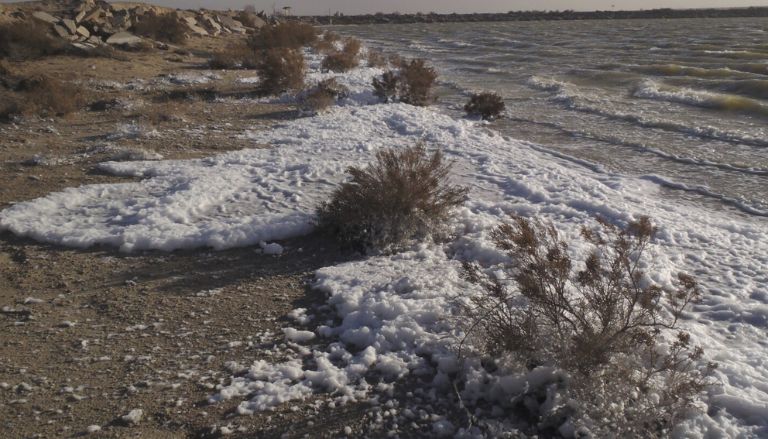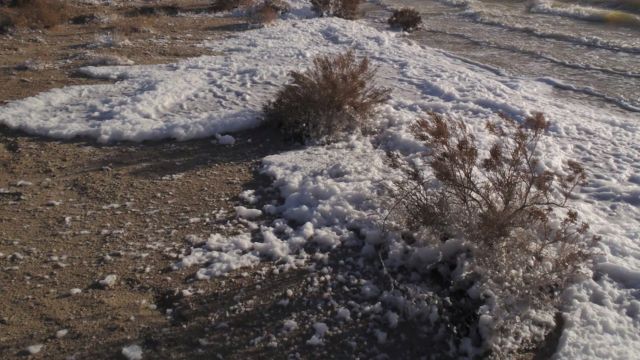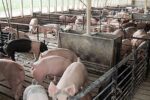ALBUQUERQUE, New Mexico – Environmental regulators and health officials in New Mexico are alerting hunters that dangerous chemicals known to cause cancer in humans have been identified at unprecedented levels in birds, small mammals, and plants at a lake near Holloman Air Force Base.
State officials claim the findings are among the highest amounts ever observed in wildlife and plants worldwide, based on comparisons to previous published studies. The state hired researchers to analyze muscle, liver, and bone samples from ducks, other birds, and rodents, as well as eggshells, algae, and rattlesnake skin.
The discoveries come as more states have been obliged to issue health recommendations to hunters and others in recent years due to “forever chemicals” known as PFAS being found in wild animals harvested for sport and food. Wildlife managers and scientists from Maine to Michigan and beyond have been boosting tests as the problem’s breadth grows.
PFAS chemicals, or per- and polyfluoroalkyl compounds, are a growing concern for public health and environmental authorities, in part because they do not decompose or disintegrate slowly in the environment and can remain in a person’s bloodstream for life.
In New Mexico, the issue is centered on a lake that serves as the wastewater reservoir for Holloman Air Force Base. It is located at the base’s edge, near White Sands National Park. While hunting is no longer permitted on the lake, state officials are concerned that ducks and other migratory birds may be harvested elsewhere.
“The levels of PFAS contamination in Holloman Lake are deeply concerning, particularly for hunters who may have consumed waterfowl from the area over the past decade,” stated Miranda Durham, the state Department of Health’s medical director.
Durham and other state officials used the assessment, which was made public on Monday, to increase pressure on federal officials amid ongoing court challenges over cleanup at Holloman and Cannon Air Force Base in eastern New Mexico.
Contamination, primarily from firefighting foam used in training exercises, has been discovered at hundreds of military installations throughout the United States. Experts estimate that cleaning will cost billions of dollars and take years.
The New Mexico study emphasizes the need for additional testing of waterfowl and oryx samples to better assess the danger to hunters beyond the immediate footprint of contamination at the base and lake.
Tasha Stoiber, a senior scientist at the Environmental Working Group, described the lake’s animals as having dangerous amounts of PFAS. However, she believes they are unsurprising given the chemicals’ widespread use in nonstick pans and other items.
“These chemicals accumulate in the body over time, creating serious long-term health risks, including cancer, developmental harm and immune system suppression,” Stoiber confirmed to The Associated Press. “The situation at Holloman Lake highlights just how much more we need to understand about PFAS contamination in wildlife and the broader environment.”
In Maine, the state wildlife agency is collaborating with university researchers to follow deer and turkeys to better understand how their movements may effect exposure. That state presently has three advisories, including one spanning 25 square miles where the danger is higher due to the historical usage of tainted fertilizer for crops, which is now prohibited.
“We’ve issued some advisories, but it’s not a landscape-level issue,” said Nate Webb, wildlife director for Maine’s Department of Inland Fisheries and Wildlife. Still, Webb believes that the more sampling is done, the more places PFAS appear.

According to New Mexico officials, the work at Holloman Lake demonstrates the extent to which these contaminants can spread across the environment. They also emphasize that New Mexico’s ecosystems are linked to the state’s cultural and economic well-being.
Matthew Monjaras, the head of the NGO Impact Outdoors, has been hunting ducks and other big game for over 20 years. He teaches his sons to do the same, and he collaborates with veterans and schoolchildren on restoration projects to increase outdoor access and improve wildlife habitat.
While the risk of exposure from eating migrating waterfowl is a concern for hunters like himself who don’t visit the lake, Monjaras believes it is no more dangerous than eating store-bought meat, catfish, or even oryx. It is the truth of the food chain, he explained.
“We’re a product of our environment,” he told me.







Leave a Comment